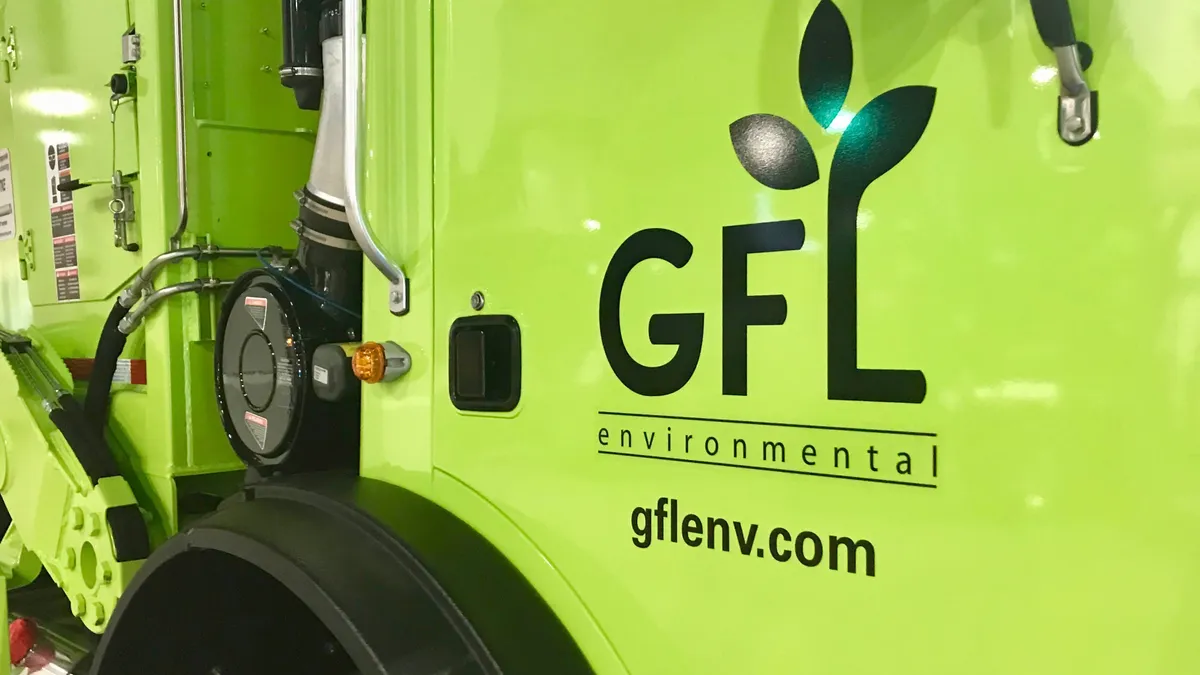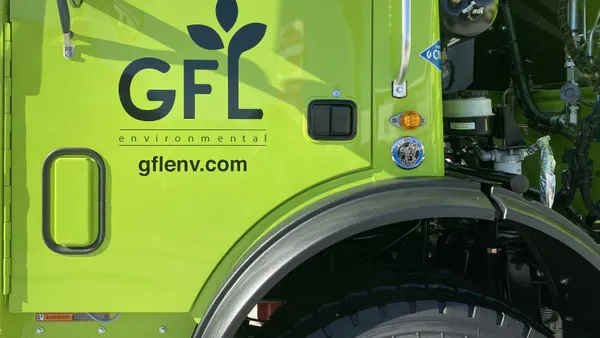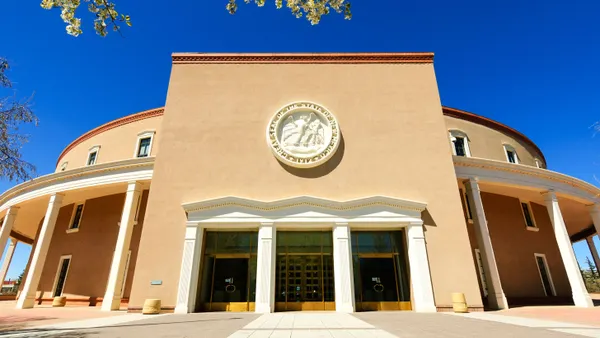All financial information in Canadian dollars
2020 Earnings
| Revenue | $4.196B |
| Year-Over-Year Change | 25.2%▲ |
| Net Loss | $994.9M |
Q4 Earnings
| Revenue | $1.236B |
| Year-Over-Year Change | 37.1%▲ |
| Net Loss | $486.7M |
GFL Environmental closed out its first year as a public company with a significantly larger footprint after spending an estimated $3.97 billion on acquisitions, and a bullish outlook despite the pandemic's ongoing economic effects.
Executives outlined a path to potentially more than double last year's adjusted free cash flow of $360 million by 2023, along with other signs of increasing profitability, fueled in part by ongoing "outsized" M&A spending. In a sign of other possible upside, Chief Financial Officer Luke Pelosi described that outlook as a "highly conservative" view of what lies ahead in terms of pandemic recovery.
"It feels like things are about to take off like a rocket ship, it's just a matter of when that hits," Pelosi said about the economy, during Tuesday's earnings call.
Growth story
- GFL further solidified its position as the industry's fourth-largest player by closing 22 acquisitions last year, including seven tuck-ins for a combined price of $80 million during the fourth quarter. Integration of WCA Waste and divestitures from Waste Management/Advanced Disposal Services is said to be progressing as expected, with remaining back office changes for the former set to be implemented in the second quarter.
- Next up, CEO Patrick Dovigi said letters of intent have been signed for an estimated 13 tuck-in deals. A larger deal, which he said is "entirely within our existing footprint and we believe would be highly complementary" could be signed in the coming weeks and would be self-financed.
- GFL is also considering selling "underutilized" assets that were part of recent transactions, which Dovigi said may be of "more strategic value to some players in those markets where we just don't see a real opportunity for us" without investing significant capital. Proceeds could be upward of $125 million this year.
GFL's rapid rise in the North American industry has seen many record years, but 2020 will go down as a clear inflection point.
After closing the notable acquisitions of American Waste and County Waste early on, it completed a US$2.2 billion initial public offering just as the pandemic began to unfold in March. In June, after a protracted federal regulatory review and highly competitive process, the company was named as the divestiture buyer for the Waste Management transaction. It turned heads yet again in August by announcing plans to buy WCA, one of the industry's largest private companies.
As the dust settles, GFL is reiterating it has ample room to keep growing faster than much of the industry and views itself as where some large players were seven or eight years ago. Dovigi said the focus for near-term acquisitions will largely be on densifying its existing footprint, to "juice as much of the fruit as we can," through tuck-ins and related moves. Though in a running theme during this quarter's calls, he was asked about the potential for another major transaction in the future and left the door open.
“Who knows, but whether we’re included in one of those or we happen to be the company that gets to pick up the divestitures from someone else merging would be a good outcome as well," said Dovigi.
COVID economy
- Pandemic effects linger, especially in Eastern Canada, with Pelosi estimating upward of $130 million in lost solid waste revenue during the year. Yet GFL reported its most positive recovery trends since the first quarter, counting pricing growth of 3.6% and better recycling returns as signs of improvement.
- Fourth quarter solid waste collection volumes were down 3%, with residential largely flat and other lines dragging. Post-collection volumes were up by 10.5% year-over-year, largely due to new MRF business, with some improvements for landfill and transfer station volumes.
- GFL's liquid waste and infrastructure/soil remediation lines remain the most affected, due largely to certain regions. Dovigi said he wouldn't rule out selling the liquid waste business for the right price some day, but it's also recovering faster than many other segments and is still seen as a long-term benefit.
- While Canada's recovery is expected to take longer, due to to more intensive virus restrictions, Dovigi anticipates a major North American uptick is inevitable. "You look at the hockey stick effect that's going to come in late 2021 and 2022 and 2023. Sporting events reopening, hotels reopening, restaurants, schools, office buildings," he said. "That's just a big amount of volume that’s going to come in."
Looking ahead
- GFL is anticipating 2021 revenue will be between $5.04 billion to $5.14 billion – with a 21% to 22% boost from last year's M&A – and adjusted free cash flow of $465 million to $495 million. This outlook does not factor in any potential acquisitions or the likely economic rebound.
- GFL anticipates another "outsized" year of M&A, potentially spending upward of $500 million on 25 to 30 transactions this year – including "attractive" opportunities in Canada. The bulk of this spending will include solid waste deals. That level of spending could maintain or increase into 2022 and 2023.
- As this expansion continues, GFL aims to maintain or decrease its current leverage rates while increasing profitability. By 2023, not factoring in potential acquisition or economic boosts, the company believes it can "significantly grow our free cash flow" and hit $6.405 billion in revenue.











